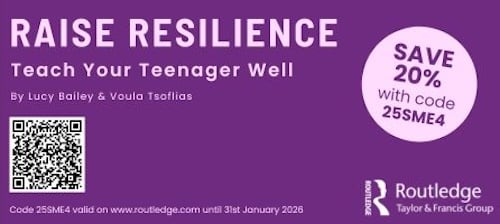Cutting through the noise
With so many wellbeing resources and programmes available to schools, it can be hard to tell what’s genuinely impactful, and what’s just well-packaged.
The term “evidence-based” gets used a lot, but what does it actually mean in practice? And more importantly, what should schools look for when choosing something they can trust.
If you are serious about equipping students with life skills, then you need a regular, sustained approach, that is embedded, engaging and relevant. It needs to fit into the busy school timetable, be something that will add value and you can hit the ground running with, whilst knowing it is backed by research, endorsed by national bodies, and proven to work.
What 'evidence-based' really means
A truly evidence-based curriculum isn’t just informed by theory. It has:
- Independant evaluations proving real-world impact
- Longitudinal data showing sustainable outcomes over five years
- Partnership with academic institutions such as the London School of Economics (LSE)
- Invested from trusted organisations, such as the Education Endowment Foundation (EEF)
- Alignment with national priorities, such as Department for Education, HM Treasury, Children & Young People’s Mental Health Coalition
- Clear learning outcomes – structured, measurable learning that students enjoy and teachers love to teach
Healthy minds: a leading example
Healthy Minds is the most evidence-based life skills curriculum in the world; that’s according to Lord Richard Layard, Emeritus Professor of Economics at the LSE, and Co-editor of the World Happiness Report and Global Policy Report, because:
- It’s been tested in the largest study of it’s kind
- Backed by the EEF, who independently evaluated it’s impact and outcomes
- Included by the DfE and HM Treasury as part of the economic case for investing in wellbeing
- It makes a difference to behaviour, attendance and life satisfaction – proven to leave a long-arm into adult outcomes
- Curriculum-ready content for Years 7-11, with embedded CPD for staff
Why does this matter for schools?
With pressure mounting on schools to improve wellbeing, attendance, behaviour outcomes, one thing is clear: it’s no longer enough to focus only on academic subjects. Teaching psychological fitness is not optional, it’s essential. If we’re equipping students to understand and manage their minds, we’re failing to prepare them for life in school, and beyond.
Choosing an evidence-based approach means equipping students with skills and competencies that last a lifetime. And when those programmes are built on robust academic research, backed by national bodies, and proven to work in real classrooms? You are not just helping individuals; you’re transforming education culture and inspiring the next generation.
Final thoughts
Evidence isn’t a nice-to-have. It’s a school’s assurance that they are investing time, resources, and energy into something that has been proven to work.
Healthy Minds is the gold standard, and your students deserve nothing less.
You can explore Healthy Minds here.
Arrange a 15-min information call to discuss by dropping us an email on info@bounceforward.com



